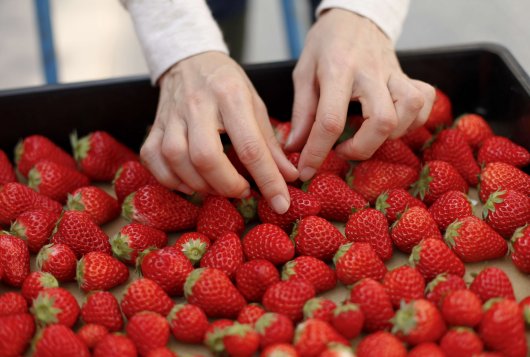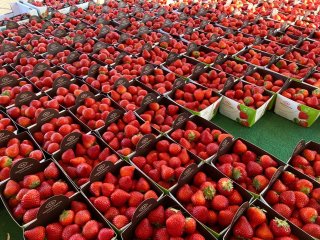
Research Results
Strawberry firmness
In the GreenCHAINge project, research focus was on understanding strawberry firmness in relation to their postharvest life on the one hand and consumer appreciation on the other.

Objective
Results on the relation between firmness and shelf life
Firmness is a good indicator and predictor of strawberry quality and shelf life throughout the chain: the lower the strawberry firmness, the higher the fruit decay score.
The rate at which quality decreases depends on the specific cultivar, but for all tested cultivars, firmness is a good indicator of the fruit decay score. This score indicates if there is damage (score = 0) to severe rot and damage (score = 5).
The firmness measurement is applicable to different strawberry cultivars. Bottom line is that firmness is a good indicator of the expected level of decay and can be used as marker to predict strawberry shelf life in the chain.

Results on the relation between firmness and harvest maturity
Strawberries harvested when ripe are in general softer than strawberries harvested while not yet ripe. For all strawberries, firmness decreased over time.
The rate at which they became soft depended on the cultivar and the production season moment in which they were harvested. For the soft fruit business this means the quality of strawberries can be managed based on the ripening stage at harvest and a suitable cultivar choice.
For example when supplying a distant market, firmer cultivars should be selected and strawberries should be picked in less ripe (but still mature) stage. Companies have the chance to match the consumer requirements to the most suitable ripeness stage of the cultivar throughout the season.
Conclusion
The riper strawberries are when harvested, the softer they are and the shorter their shelf-life. However, the riper the strawberry, the more appreciated the taste. It is therefore important to make a well-informed decision about harvest time matching your strawberry type.
Take away message
Depending on the distance to market, a different ripeness stage of strawberries should be chosen to have a high quality strawberry available for the end consumer
This project was commissioned and funded by Driscoll's and Bakker Barendrecht and cofunded by Top Sector for Horticulture & Starting Materials.
More detailed information about this research result can be found at: https://edepot.wur.nl/503212
Questions? Please contact our experts through the contact form below.